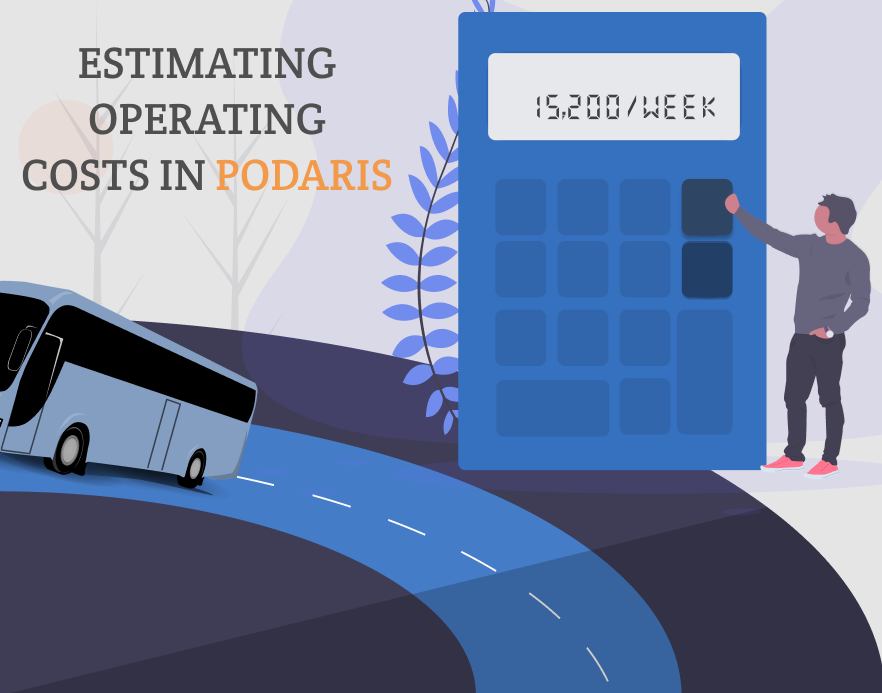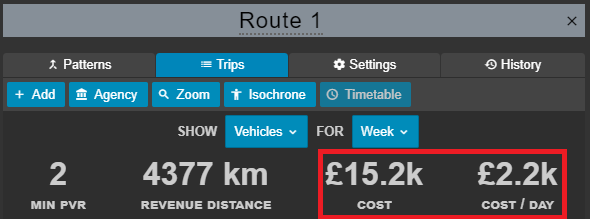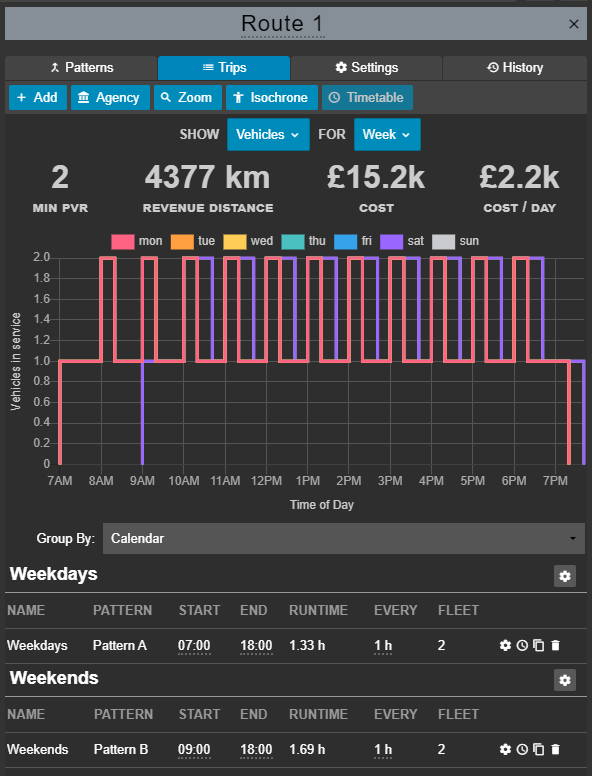
The ongoing pandemic has decimated public transport agencies across the world. Some agencies have experienced 80%-90% reductions in ridership and farebox revenue, while also incurring increased costs in the form of sudden network redesigns, staffing shortages, and funding shortfalls.
These challenges have highlighted the need for agile ways to plan responsive alterations to public transport services. The Podaris platform has always excelled at this, empowering transport planners to collaboratively create high-level multi-modal transport scenarios, generating meaningful and reliable outputs in a fraction of the time taken by traditional methods. For our Enterprise customes, these outputs now include cost modelling, helping planners to understand the financial consequences of different scenarios.
Throughout the pandemic, Podaris has been helping bus planners all over the world quickly re-envision bus networks in both large and small-scale planning exercises. With easily configurable unit-costs, expenses can be modelled in whatever level of detail is needed. After every change to a service or route, Podaris instantaneously recalculates the cost estimates, helping planners to develop an intuitive feel for the financial tradeoffs.
Rapidly seeing the impact of changes and scenarios enables transport planners to quickly compare costs when making alterations to routes, timetables, and fleet sizes. This saves significant time over manual processes, such as hand-made spreadsheets. Podaris’ cost estimation capabilities can easily:
- Identify surplus vehicles on routes
- Identify the most cost-effective strategies to reach under-served communities and key workers
- Reduce costs by merging overlapping routes
- Prioritise which routes to continue subsidising to provide the most equitable network
- Reactively optimise services in response to rapidly changing ridership
Let us show how Podaris makes it easy to create cost estimates for a new bus route:
A flexible way to define costs and expenses
Cost models come in many shapes and sizes, but often tend toward the extremities:
- Very simplistic, with one or two values used to represent a generalised cost
- Very detailed, with parameters for every conceivable expense
Either level of detail can be useful. Podaris is more focused on supporting high-level strategic modelling rather than detailed operational modelling, but we strive to do this in as accurate a fashion as possible. Because the primary cost drivers for any system are associated with the size and utilisation of the vehicle fleet, we makes it easy to specify custom cost parameters on a per-vehicle basis. This flexibility enables planners to quickly explore the financial impact of different fleet sizes, different route lengths, and (for example) a fleet that is powered by hydrogen vs. batteries vs. petrol.
Operating costs can be based on a variety of factors: by day, distance and time. For example, Per distance costs could represent fuel costs, while per time costs could represent a driver's hourly wages.

Once these parameters are set, Podaris instantly calculates the costs for individual routes, as well as the network as a whole. Costs can be displayed for a day, week, or other custom time-period, quickly compared across scenarios. Finally, these scenarios can be interactively shared with stakeholders, allowing them to explore proposals and transparently understand the assumptions behind them.

Working with operating costs
In this example, we're going to look at how Podaris calculates the costs for a route when given a single, per time expense of £100 per hour for a specific type of vehicle (in this case, a bus).

To calculate per vehicle-time costs first requires that Podaris sums the duration of all of trips made by that class of vehicle, then multiplies that by the unit costs for that vehicle-time. These per hour costs apply to both revenue and non-revenue durations across a trip, including during any deadheading.

Above, we can see a route with two trips - one that runs from 7am to 5pm on weekdays and the second from 9am to 6pm on weekends. Each trip also includes a layover equivalent to 10% of the total runtime.
Podaris allows layovers to be defined as a percentage of the total runtime. Maximum and minimum layover times can also be specified.

Podaris calculates that each trip will have a Peak Vehicle Requirement (PVR) of two buses to meet the required every-hour frequency.
Those vehicles are busiest during the weekday trips, accruing 22 hours combined in revenue and non-revenue time. Based on our £100p/hour operating expense gives us our £2.2k cost/day estimate.
Cost estimates are always calculated automatically, and any changes made to the route are instantly reflected in its preview panel.

We've shown how Podaris makes it possible to analyse the impact of transport scenarios in moments. Planners can create flexible high-level cost models to understand the estimated financial implications as they make changes to their routes in real-time. Unlike a spreadsheet-based approach, the transport scenario and cost model will never fall out-of-sync, and the underlying assumptions are transparently accessible to other stakeholders.
With these capabilities, planners have been able to increase their networks’ efficiency, help prioritise services to cut, and more during this pandemic. You can learn more about how cost estimates work in our extensive knowledgebase or schedule a demo to see how Podaris can help you optimise your costs today.